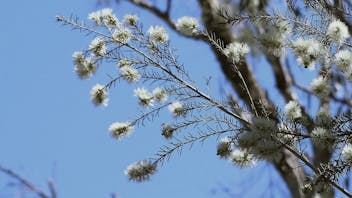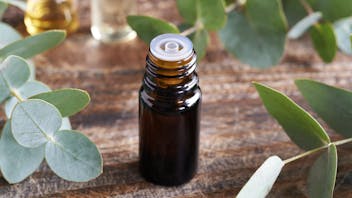Product Overview
Our organically grown Niaouli essential oil displays a fresh, strong, highly diffusive, cineolic aroma. It is referred to as MQV (an abbreviation of its botanical name), a trade name the oil acquired when it was often used by the great French researcher in essential oils, Pierre Franchomme.[1] The Melaleucas, like most of the Eucalyptus species, offered centuries of reliable and regional usage for indigenous peoples, yet they remain familiar botanicals for modern generations – appearing in chest and muscle rubs, aromatherapy blends, and personal care products today.
Melaleuca quinquenervia viridiflora is a tall tree native to the Moluccas that also grows abundantly in much of Indonesia, New Caledonia and southern Papua New Guinea, Australia and Madagascar.[2],[3] It is one of three important species of the genus Melaleucathat are used for essential oil, the other two being M. alternifolia (Tea Tree) and M. cajuputi (Cajuput), and the fourth, M. ericifolia (Rosalina).[4]
With some initial confusion around the original botanical name, it was eventually determined that up to six distinct chemotypes of this oil exist, as a result of varied ecological terrain, with high percentages of one of the following constituents: 1,8-cineole, (E)-nerolidol (aka Nerolina), methyleugenol, methylisoeugenol, linalool and viridiflorol. Our organic Niaouli is the1,8-cineole chemotype that is predominant within Madagascar.
1 Schnaubelt, Kurt. Advanced Aromatherapy, 1998, p. 82.
2 Rhind, Jennifer Peace. Essential Oils – A Handbook for Aromatherapy Practice, 2012, p. 192.
3 Sellar, Wanda. The Directory of Essential Oils, 1992, p. 112.
4 Rhind, Jennifer Peace. Essential Oils – A Handbook for Aromatherapy Practice, 2012, p. 192.



